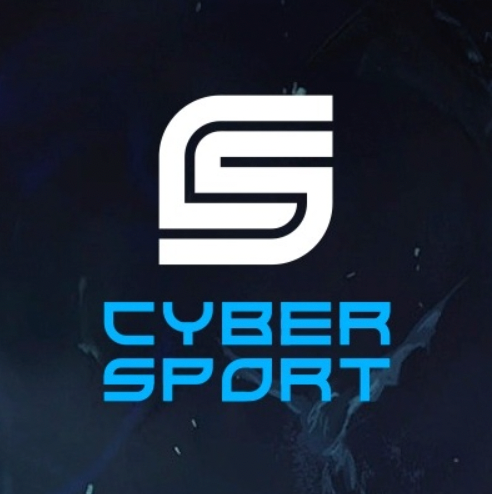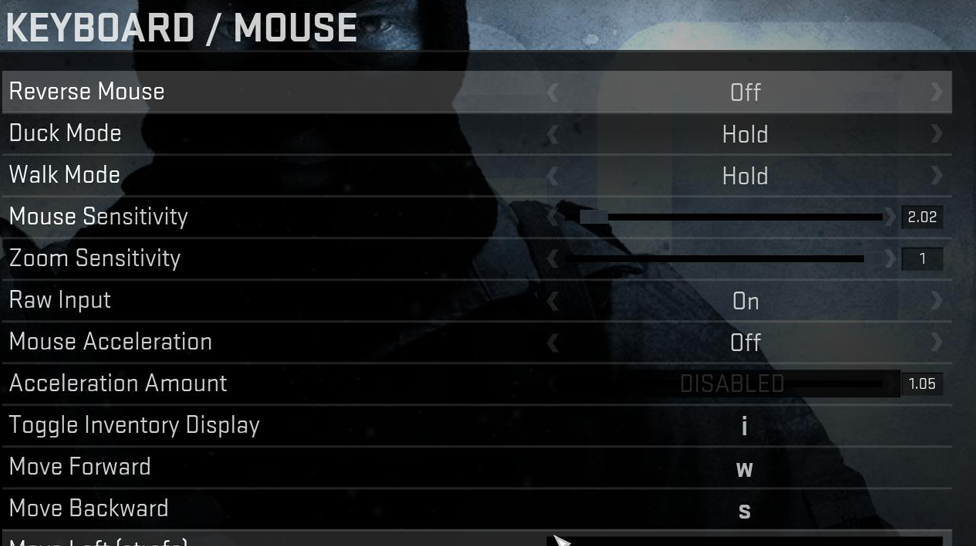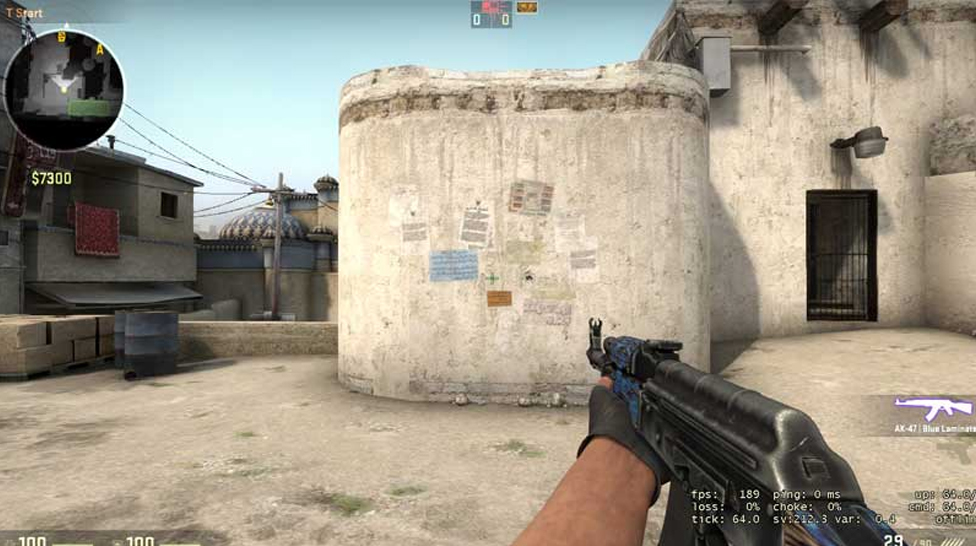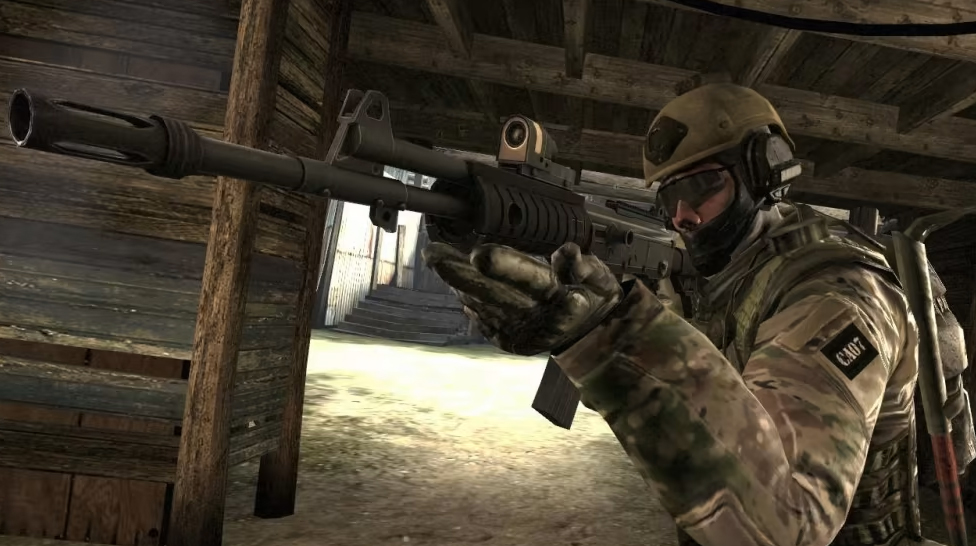Where To Start
Before you dive into the deep end of settings, there are a few things that should be your immediate focus:
- Raw Input ON, Mouse Acceleration OFF: This one's simple. Raw Input gives you the most accurate mouse movement, while mouse acceleration can throw off your precision.
- eDPI Setup: Forget about static sensitivities. Use eDPI (effective DPI), which gives you a much better sense of consistency. We'll get into that next.
- FPS Capping: In CS2, try setting the FPS cap to +fps_max 300 or ~20–30% above the FPS you usually get, and check the frametime stability, not just the peaks. Capping your FPS is important since a higher FPS means inconsistency in frames if the system is not capped properly. Also, if you enable G-Sync or FreeSync, the consistency with a supported GPU generally improves as it synchronizes the refresh rate of the monitor. Keep your FPS capped properly with +fps_max <value> (not -fps max, that’s old and useless). The default is fine, but tweak it if you’re aiming for stable performance.
- In-game Video Tweaks: You should always prefer in-game settings for adjusting video quality over messing with launch options. Launch options, in general, are much less relevant than they were in CS:GO. Only use the -vulkan flag if you find it beneficial to your rig.
Remember, the goal is to maintain simplicity. Do not make it too complicated. Let's dive in.
Mouse & eDPI
When it comes to mouse settings, pro players are a mixed bag. There’s no one-size-fits-all answer. For starters, eDPI (which is simply your mouse DPI multiplied by your in-game sensitivity) is your best friend. While some pros like low eDPI for pixel-perfect accuracy, others take something higher in exchange for better reactions.
- Low eDPI (approximately 400-800): Good if you want precision and control, such as when holding long angles or AWPing.
- Middle eDPI (800-1600): Generally, the sweet spot for most players that works well in all aspects of play. It’s fast on the uptake for quick flicks, but precise enough for wider sprays.
Remember, though, that these are ranges rather than strict guidelines. The secret to locating your perfect eDPI is personal experimentation. The more time you can practice with your settings, the less forced they’ll feel. To determine your effective DPI, multiply your mouse DPI by your in-game sensitivity (eDPI = DPI x Sensitivity). To get the best tuning for you, test using the 180° flicks drill and bot headshots on a workshop map.
Crosshair (With Share Codes)
Your crosshair may seem like a small detail, but it can make a huge difference in your playstyle. CS2 allows importing and exporting crosshairs by unique share codes, which is a nice addition if you want to recreate a particular pro setup or simply experiment.
- AWP Crosshair: Generally, a small, simple crosshair with no lines around it for accuracy. Use the share code 0;P;0;1;0;0;0;0;1;0;0;0.
- Rifler Crosshair: This is generally a brighter, more noticeable crosshair with thicker lines or gaps to make it easier to control your spray. Use the share code 0;P;0;1;0;0;0;0;0;0;0;0.
- Visibility-Focused: Anything colorful that has an outline. This type of crosshair is excellent if you play in dark environments or want your crosshair to stand out in pressing moments. Use the share code 0;P;0;1;1;0;0;1;0;0;0;0.
To import the share codes, follow Settings → Game → Crosshair → Share/Import Code. Check out the CS2 community or pro settings for more codes to test. But again, it’s all about what feels comfortable. Your crosshair is like an extension of your hand, so don’t be afraid to try new things.
Video Settings for FPS & Clarity
The visual quality of CS2 and the available performance settings are surprisingly flexible. However, you will need to adjust a couple of details to achieve high FPS. A 4:3 stretched resolution is popular with many pros as it makes the enemy model wider, making it easier to locate targets. However, if you’re purely playing for precision, opt for 16:9 to take advantage of the widest-angle view possible.
- Resolution/Aspect Ratio: As stated, most professionals, even in 2025, prefer 4:3 stretched. This is purely a personal choice but can help with target visibility.
- Model/Texture Quality: This should be set to Medium-Low to ensure that the FPS is not compromised to the extent that a lot of visual information is lost.
- Shadows: It may be better to keep shadows medium or low because they can help you notice enemies better, as they are usually a faint signal of player movement.
- MSAA: Anti-aliasing is a system-demanding method for improving game graphics, and you should find the balance between performance hit and visual clarity.
Note that Sub-Tick improvements have made the game smoother, so optimizing your FPS is less critical with CS2.
2025 CS2 Launch Options
In 2025, you’re pretty much safe to leave your launch options empty or just use the essentials. Here are the recommended safe flags:
- -vulkan: Test this to see if it improves your performance, but only if your rig supports it.
- -refresh: Set this to match your monitor’s refresh rate for smoother gameplay.
- +exec autoexec.cfg: If you’ve got an autoexec, this can be helpful, but it’s not necessary.
Here’s what you don’t need anymore:
- -tickrate 128: This was a CS:GO relic. CS2 uses Sub-Tick, so this is obsolete.
- -high: No longer does much in CS2 and can cause stutter on some systems.
- -d3d9ex: This is Source 1 only, so forget it.
- -r_emulate_g: Another CS:GO holdover with no impact in CS2.
Do:
- Minimal options for better stability and performance.
- Try: -vulkan only if it improves frametime consistency for your system.
- Optional: -refresh 240 to match your monitor's refresh rate for smoother gameplay.
Don’t:
- Use CS:GO/Source 1 flags, as they’re not optimized for CS2.
- Expect launch flags to "fix" networking—Sub-Tick handles input timing, not launch options.
Keep things light with your launch options. Performance should be solid without trying to overcomplicate it.
Pro Case Studies (Rolling Examples)
NiKo (CS2)
Like many top-tier pros, NiKo doesn’t fuss much with launch options. He tends to run 4:3 stretched for better target visibility and consistency. But remember, his setup changes frequently, and his choices are often tailored to specific tournaments or conditions.
Takeaway: Use his settings as a reference, not a strict rule. Pro players often tweak their settings based on personal preference and tournament environment. If you’re looking for more pro case studies, there's a ton of variation. Settings evolve quickly.
Sub-Tick: What It Means for CS2 Settings
Sub-Tick technology is a game-changer for CS2, and it's worth understanding how it affects your settings:
- Precision Input Handling: Sub-Tick timestamps your inputs between ticks, so there’s no need to worry about 64 Hz servers or "perfect" tick rates anymore.
- Consistency Improvements: Valve continues to tweak Sub-Tick for better overall stability.
- Less Need for Tick Rate Tweaks: Forget about the 128-tick obsession. Sub-Tick ensures your shots register with more precision, even if the server is 64 Hz.
In short: Your in-game settings matter more than ever. Focus on finding what works for your playstyle, not what the “old-timers” recommended.
FAQ
- Do launch options still help in CS2?
Not really. Keep them minimal. A few safe ones, like -vulkan, may help in specific situations, but most launch options won’t make a noticeable difference anymore. - Should I force 128 tick?
No, Sub-Tick handles your inputs. 128-tick servers are no longer necessary for competitive play in CS2. - Is -Vulkan worth it?
It depends on your system. If you see a performance improvement with -vulkan, then keep it. Otherwise, you can leave it out. - Why do pros use 4:3 stretched?
It’s about target visibility. The stretched resolution makes enemies appear wider and easier to hit. It’s all about personal preference, though. - Best way to cap FPS?
Use +fps_max <value>. Don’t go too high, but make sure your frame times are stable. - How often should I tweak settings?
You don’t need to tweak constantly. However, after major updates or new drivers, check your settings. Valve is still tweaking Sub-Tick, engine updates, and audio.
CS2 Gambling
CS2 Skin Trading
Rust Gambling
Promo Codes
Online Casinos
Crypto Casinos
CyberSport Feed




![CS2 Pro Settings Guide: Mouse, Crosshair, Video & Sub-Tick ([month] [year])](/imgs/news_5146/20251003/1759492001_d23412c1547c168e54a4.jpg)




![Mastering the Jumpthrow Bind in CS2: Guide for [year] Mastering the Jumpthrow Bind in CS2: Guide for [year]](/imgs/news_8184/20250403/cache/1743689035_437c3a5edc5234b6e222___308_174.jpg)

![CS2 Rank Distribution in [year] CS2 Rank Distribution in [year]](/imgs/news_7959/20241011/cache/1728647520_6b5a528dc8c6fd1dcfb1___308_174.jpg)
![How to Deposit Money or Skins into CSGORoll ([year]) How to Deposit Money or Skins into CSGORoll ([year])](/imgs/news_8218/20250602/cache/1748864443_a25e3ae72a35709014f6___308_174.jpg)